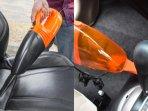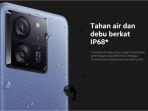Kunci Jawaban
Kunci Jawaban Bahasa Inggris Kelas 9 Halaman 127 128, Kurikulum Merdeka: My Underwater Adventure
Berikut kunci Jawaban Bahasa Inggris kelas 9 SMP halaman 127 128. Artikel ini akan memudahkanmu dalam mengerjakan soal
Penulis: Andra Prabasari | Editor: galih permadi
Kunci Jawaban Bahasa Inggris Kelas 9 Halaman 127 128, Kurikulum Merdeka: My Underwater Adventure
TRIBUNJATENG.COM - Berikut kunci Jawaban Bahasa Inggris kelas 9 SMP halaman 127 128.
Artikel ini akan memudahkanmu dalam mengerjakan soal-soal Bahasa Inggris.
Mengerjakan soal Bahasa Inggris SMP tak sulit lagi dengan ulasan ini.
Berikut kunci jawabannya yang berhasil dirangkum TribunBali.com dari berbagai sumber.
Kali ini kita akan membahas soal pada Chapter 2 yang berjudul Taking Trips sesuai dengan buku Bahasa Inggris kelas 9 Kurikulum Merdeka edisi tahun 2022.
Jawaban Bahasa Inggris Kelas 9 Halaman 127 128 Kurikulum Merdeka
Soal yang akan kita selesaikan adalah soal pada halaman 127 128 pada kegiatan siswa Section 3 about Language Focus.
Jawaban di bawah ini diharapkan bisa membantu siswa sebagai alternatif jawaban untuk menyelesaikan soal pada halaman 127 128 di buku siswa Bahasa Inggris kelas 9.
Unit 3. My Underwater Adventure
Section 3 - Language Focus
a. Study the following explanation about how to tell about two events that happened at the same time in the past.
When we talk about two events that happened at the same time in the past, we combine two tenses. Look at the following picture.
We can see that the past simple action happened in the middle of the past continuous action, while it was still going on.
These tenses are frequently used to indicate that one action is interrupting another. Let’s highlight the two sentences.
While I was swimming a little further down, I saw green sea turtles.
The first action is in the past continuous tense. That means, the action in the above sentence, swimming, took place over a period of time.
Saw green sea turtle is in the simple past tense and it is the single action. We can understand that Monita started swimming before she saw green sea turtles.
When we combine the two sentences using past continuous and past simple, we sometimes use the conjunctions while or when.
While I was swimming a little further down, I saw green sea turtles.
If we change the order of our example above, we get: When I saw green sea turtles, I was swimming a little further down.
We use while in a clause with continuous action, using a verb in a continuous tense. We use when in a clause with a single action, using simple past tense.
We can put while and when either at the beginning of a sentence or in the middle. While I was swimming a little further down, I saw green sea turtles.
I saw green sea turtles while I was swimming a little further down.
When I saw green sea turtles, I was swimming a little further down.
I was swimming a little further down when I saw green sea turtles.
Can you see a difference in the above sentences? Both sentences have a similar meaning. In the first sentence, we just need a comma to separate the two clauses.
b. Underline the first actions in these sentences. Number one has been done for you.
1. While I was struggling to put on the mask, the snorkel, and the fins, one of the participants approached me and offered help.
2. When we arrived at the snorkeling site, many snorkelers were getting ready to start swimming.
3. When we departed from Manado harbor, I saw the sun was shining on the sea so brightly.
4. The birds were swooping when I tried to get off the motorboat.
5. The snorkeling rental was offering a 20 persen discount when we got there.
6. One student ate a lot while we were having lunch together at a local restaurant near the beach.
7. We were still eating when out of the blue a cat jumped on our table and stole my tuna.
Jawaban:
1. I was struggling to put on the mask, the snorkel, and the fins.
2. Many snorkelers were getting ready to start swimming.
3. Sun was shining on the sea so brightly.
4. The birds were swooping.
5. The snorkeling rental was offering a 20 persen discount.
6. We were having lunch together.
7. We were still eating.
c. Fill in the blanks with the past continuous or the past simple. Number one is an example.
1. While we _______(drive) home, we ______ (stop by) some local shops to buy souvenirs.
2. A tour guide _________ (talk) to other tourists when I ________ (arrive) at the dive center.
3. The waiter _______ (serve) the food for us when we __________ (take) a photo.
4. My teacher _______ (fall asleep) while we ________ (travel) by motorboat.
5. The internet ____ (go) down while I ____ (browse) some information about Bunaken Marine Park.
6. We _____ (stand) in line when they ______ (announce) that the tickets for the ferry had sold out.
Jawaban:
1. Were driving; stopped by.
2. Was talking; arrived.
3. Was serving; took.
4. Fell asleep; were traveling.
5. Went; was browsing.
6. Were standing; announced.
Demikian jawaban soal Bahasa Inggris kelas 9 halaman 127 128 Kurikulum Merdeka, Section 3 sesuai dengan buku siswa Bahasa Inggris berjudul English for Nusantara edisi tahun 2022.
Disclaimer
- Jawaban di atas hanya digunakan oleh orangtua untuk memandu proses belajar anak.
- Soal ini berupa pertanyaan terbuka yang artinya ada beberapa jawaban tidak terpaku seperti di atas.
Artikel ini telah tayang di TribunBali.com
kunci jawaban bahasa inggris kelas 9
Soal Bahasa Inggris kelas 9 SMP
soal latihan PAS Bahasa Inggris kelas 9
tribunjateng.com
| Kunci Jawaban Bahasa Inggris Halaman 196 197 198 Kelas 9 Chapter 10 |
:format(webp):focal(0.5x0.5:0.5x0.5)/jateng/foto/bank/originals/Bahasa-Inggris-Kelas-IX-SMP-Halaman-196-197-198.jpg)
|
|---|
| Kunci Jawaban PAI Kelas 9 SMP Halaman 133: Ekonomi Usmaniyah |
:format(webp):focal(0.5x0.5:0.5x0.5)/jateng/foto/bank/originals/20251012_Coding-dan-AI.jpg)
|
|---|
| Kunci Jawaban Bahasa Inggris Halaman 121-122 Kelas 9 SMP/MTs Chapter 6 |
:format(webp):focal(0.5x0.5:0.5x0.5)/jateng/foto/bank/originals/Kunci-Jawaban-Bahasa-Inggris-Kelas-9-SMPMTs-Halaman-113-Chapter-6-We-Have-Been-to-an-Orphan-Home.jpg)
|
|---|
| Kunci Jawaban Seni Budaya Kelas 8 Halaman 66 Bab 4 |
:format(webp):focal(0.5x0.5:0.5x0.5)/jateng/foto/bank/originals/20251012_Coding-dan-AI.jpg)
|
|---|
| Kunci Jawaban Bahasa Inggris Halaman 123 124 125 Kelas 9 SMP/MTs |
:format(webp):focal(0.5x0.5:0.5x0.5)/jateng/foto/bank/originals/Kunci-Jawaban-Bahasa-Inggris-Kelas-9-SMPMTs-Halaman-113-Chapter-6-We-Have-Been-to-an-Orphan-Home.jpg)
|
|---|

:quality(30):format(webp):focal(0.5x0.5:0.5x0.5)/jateng/foto/bank/originals/2025608_soal-jwbn-bhs-inggris-9-hal-129.jpg)
:format(webp):focal(0.5x0.5:0.5x0.5)/jateng/foto/bank/originals/20251110_uksw111.jpg)









:format(webp):focal(0.5x0.5:0.5x0.5)/jateng/foto/bank/originals/20251109_uin76.jpg)
:format(webp):focal(0.5x0.5:0.5x0.5)/jateng/foto/bank/originals/20251110_UNIMMALOMBA.jpg)
:format(webp):focal(0.5x0.5:0.5x0.5)/jateng/foto/bank/originals/20251110-uinsaizu_pilihan.jpg)
:format(webp):focal(0.5x0.5:0.5x0.5)/jateng/foto/bank/originals/20251110_tel-u.jpg)
:format(webp):focal(0.5x0.5:0.5x0.5)/jateng/foto/bank/originals/20251110_PkMFakEkonomi.jpg)
Isi komentar sepenuhnya adalah tanggung jawab pengguna dan diatur dalam UU ITE.